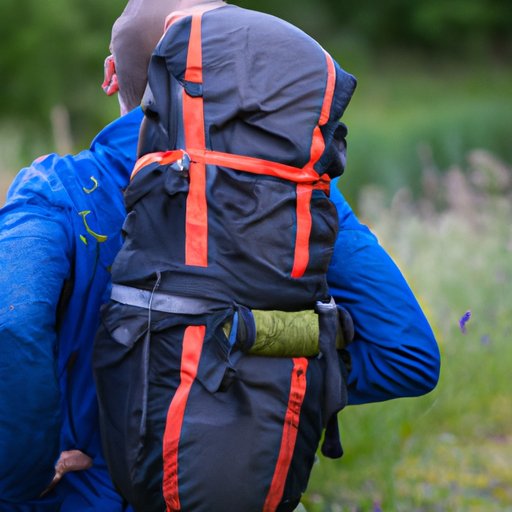Introduction
For many people, backpacks are an essential part of everyday life. Whether you’re a student carrying textbooks or a hiker with camping gear, having the right backpack can make all the difference in terms of comfort and safety. In this article, we will explore how to fit a backpack so that it is comfortable and secure.
Different Types of Backpacks
There are many types of backpacks available, each designed with different purposes in mind. For example, a hiking backpack is designed to carry heavier loads over long distances; while a daypack is ideal for carrying lighter items over shorter distances. Other types of backpacks include book bags, travel bags, laptop bags, and camera bags.
When choosing a backpack, it’s important to consider the type of activities you plan to do with it. Different types of backpacks have different pros and cons. For instance, a hiking backpack is typically more durable and provides better support for heavy loads, but may be too bulky for everyday use. On the other hand, a daypack is lightweight and more versatile, but may not provide enough support for heavier items.
Choosing the Right Size Backpack
Once you’ve chosen the type of backpack you need, the next step is to select the right size. In general, backpacks come in three sizes: small, medium, and large. The size you choose should depend on the amount of items you plan to carry and your body size.
To ensure a proper fit, it’s important to measure your torso length. To do this, stand up straight and measure from the base of your neck to the top of your hipbone. Once you’ve determined your torso length, you can use the following guidelines to choose the right size backpack:
- Small: Torso length up to 17 inches
- Medium: Torso length between 17-20 inches
- Large: Torso length greater than 20 inches
It’s also important to make sure the backpack fits your body shape. If you’re petite, you may want to look for a smaller backpack with adjustable straps. Conversely, if you have a larger frame, you may need a larger backpack with more padding and support.
Fitting Techniques
Once you’ve chosen the right size backpack, it’s time to adjust the straps for a snug fit. Start by adjusting the shoulder straps so that the bottom of the backpack sits at the curve of your lower back. You can then adjust the waist belt so that it fits snugly around your hips. Finally, position the strap buckles so that the straps don’t dig into your shoulders or slip off your back.
Packing a Backpack
Now that you’ve fitted the backpack, it’s time to start packing. Here are some tips to help you get the most out of your backpack:
- Pack heavier items closer to your back for better balance.
- Distribute weight evenly throughout the backpack.
- If possible, use compression sacks or stuff sacks to organize items and save space.
- Pack items in a way that allows easy access to the items you need most often.
By following these tips, you can maximize the amount of items you can carry without compromising on comfort or safety.

Benefits of Using a Backpack
Using a properly fitted backpack can provide numerous benefits. The most obvious benefit is improved posture. Wearing a backpack that fits properly can help keep your spine aligned, which can reduce strain on your muscles and joints. Additionally, a well-fitted backpack can help improve your mobility since it won’t be pulling you off balance.

Safety Tips for Carrying a Heavy Load
When carrying a heavy load, it’s important to use proper lifting techniques to avoid injury. When lifting a backpack, always bend at the knees and lift with your legs. Additionally, try to distribute the weight evenly throughout the backpack to prevent strain on your back and shoulders.
Conclusion
In conclusion, finding the right backpack and fitting it correctly can make a world of difference in terms of comfort and safety. By measuring your torso length and selecting the right size backpack, you can ensure a proper fit. It’s also important to adjust the straps and buckles for a snug fit, as well as pack the backpack correctly for maximum comfort and stability. Finally, when carrying a heavy load, it’s important to use proper lifting techniques to avoid injury.
By following these tips, you can make sure you’re getting the most out of your backpack and using it safely.
(Note: Is this article not meeting your expectations? Do you have knowledge or insights to share? Unlock new opportunities and expand your reach by joining our authors team. Click Registration to join us and share your expertise with our readers.)
